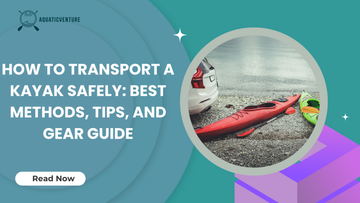
Boating should be about enjoying the water, not stressing over whether your boat is going to start sinking because you packed it like you’re moving to a new house. So, what is the best way to avoid overloading your boat?
The answer is simple: just know your boat’s limit. The maximum capacity of a boat is more than just a number. Exceeding these limits doesn’t just make things uncomfortable; it’s a fast track to turning your boat into a safety risk.
Knowing how to read your boat’s capacity plate and following some smart boating safety tips can keep you from turning your relaxing ride into a sinking story. Ready to learn how to avoid an overload and keep things smooth sailing? Let’s get into it!
Understanding Boat Weight Limits: Why Do They Matter?
When it comes to enjoying a safe day on the water, understanding your boat’s limits is key. Whether it’s boat power loading or figuring out how much gear you can bring along, knowing the maximum weight capacity is crucial.
Overloading your boat not only risks your safety but also affects the boat’s performance, especially when it comes to power loading a boat. Be sure to check your boat’s capacity plates for details on the maximum number of passengers and passenger limits—this ensures you’re not pushing the limits and keeps everything steady.
Stick to the guidelines, and you’ll avoid the dangers of overloading your boat and stay safe on the water!
How to Calculate the Total Weight Capacity of Your Boat?
Wondering what is the best way to avoid overloading your boat? Start by following these simple steps to calculate your boat’s total weight capacity, ensuring you stay safe and avoid any performance issues.
Step 1: Check the Capacity Plates
Your boat’s capacity plates are the first place to look. They will tell you the maximum weight capacity and the maximum number of passengers your boat can safely carry. This is the foundation for all other calculations.
Step 2: Add Up the Weight of Passengers
Next, calculate the total weight of all passengers. Each person’s weight contributes to the overall weight your boat is carrying, so be sure to add them up accurately.
Step 3: Factor in Gear and Equipment
Don’t forget about your gear! Fishing equipment, coolers, life jackets, and any other supplies all add weight. Make sure to include everything that will be on the boat.
Step 4: Account for Maximum Horsepower
If you're power loading a boat, make sure the total weight doesn’t exceed the boat’s designed performance capabilities, including the maximum horsepower. Overloading can affect the boat’s ability to move efficiently and safely.
Step 5: Consider Water Conditions
Lastly, always consider the water conditions. Rough or choppy water can make the boat less stable, so you may want to stay under the maximum weight capacity to allow for better handling.
Factors That Affect Your Boat's Weight Capacity
If you're asking what is the best way to avoid overloading your boat, the answer lies in understanding the key factors that influence your boat's weight capacity.
Knowing how these elements impact your boat’s load can help you avoid overloading your boat and ensure a safer, smoother ride.
-
Boat Design and Type: The type and size of your boat play a huge role in its maximum weight capacity. Larger boats can carry more weight, but small boats have strict weight limits.
-
Capacity Plates: Always refer to your boat’s capacity plates, which will provide important information on the maximum number of passengers and weight limits. These are your first line of defense in understanding your boat’s safe limits.
-
Weather Conditions: In bad weather, your boat will be less stable, and water conditions can affect how much weight it can safely carry. Always adjust your load in anticipation of weather changes.
- Boat Load during Power Loading: Power loading a boat (loading it with a motor running) should also factor in how much weight your boat is carrying. Too much weight can cause instability, especially during launch or docking.
The Dangers of Overloading: Safety Risks and Consequences
Many boaters underestimate how quickly excess weight can turn a fun trip into a dangerous situation. Ignoring the passenger limit on a boat and exceeding the weight limit can lead to serious safety hazards, including a swamped boat, loss of control, or even capsizing.
The best way to avoid overloading your boat is to distribute weight properly, follow safety guidelines, and ensure you don’t exceed the recommended capacity.
Overloading affects the boat’s performance in many ways:
-
Uneven weight distribution can cause instability, making it harder to steer.
-
A heavily loaded boat sits lower in the water, increasing the chances of waves spilling in.
-
Exceeding the passenger limits adds strain on the boat, making it less responsive to turns and stops.
- Too much passenger gear can also throw off balance and make moving difficult in case of emergencies.
Also read: What Do They Use to Make Boats Stabilize?
Tips for Packing Smart: How to Distribute Weight Evenly
No matter if you're carrying passengers gear, coolers, or fishing equipment, distributing the weight evenly is key to avoiding an overload boat situation.
Here are some tips to help you pack smart and keep your boat balanced:
1. Check the Boat Capacity Plate Guidelines: Before loading your boat, always refer to the boat capacity plate guidelines. This will provide the maximum weight capacity and passenger limit on a boat, ensuring you don't exceed safe limits.
2. Balance the Weight: Place heavier items closer to the center of the boat and as low as possible. This helps keep the boat steady, especially during boat power loading or power loading a boat.
3. Pack Light but Smart: When it comes to passengers gear, pack only what’s necessary. Excess gear can quickly add up, pushing you close to the maximum weight capacity.
4. Consider Safety Equipment: Don't forget to account for life jackets and other safety gear. They should be placed where they can be accessed easily, but their weight should also be evenly distributed.
How to Check and Adjust Your Boat's Weight Capacity Regularly?
Regularly checking and adjusting your boat’s weight capacity is crucial for ensuring safe and efficient operation on the water.
Overloading your boat can lead to serious safety risks, so it’s important to stay within the recommended limits.
Here’s how to check and adjust your boat's weight capacity:
-
Review the Boat Capacity Plate Guidelines: The first step in checking your boat’s weight capacity is to review the boat capacity plate guidelines.
These plates provide crucial information, such as the maximum weight capacity and the maximum number of passengers your boat can safely carry. Always refer to these guidelines before heading out on the water.
-
Monitor Weight Distribution: Proper weight distribution is key to maintaining balance and stability. Distribute the weight evenly across the boat, placing heavier items closer to the center and as low as possible.
This prevents your boat from becoming unbalanced, especially when boat power loading or power loading a boat.
-
Consider Passengers and Gear: Always keep track of the total weight of passengers gear, such as coolers, fishing equipment, and supplies, in addition to the weight of your passengers.
Make sure you’re not exceeding the passenger limit on a boat or adding too much weight, which could lead to overloading your boat.
-
Check for Wear and Tear: Boats may lose capacity over time due to wear and tear. Inspect your boat regularly for damage or changes that could affect its weight capacity.
Make sure that everything is in working order and that you haven’t inadvertently reduced the boat's capacity through improper maintenance.
-
Adjust for Water Conditions: If you’re operating in rough water or inclement weather, you may want to reduce your load to ensure stability.
Even if your boat can handle more weight in calm conditions, bad weather or choppy water can make your boat less stable, so adjust accordingly.
Conclusion
The best way to avoid overloading your boat is by understanding your boat's weight capacity, following the capacity plate guidelines, and ensuring that you stay within the maximum weight capacity and passenger limits.
At Aquatic Venture, we promise to deliver a smooth shopping experience for all your sustainable gear, ensuring that every purchase supports environmental conservation.
For more information, visit us and shop now for eco-friendly water gear to stay safe while boating.
FAQs
Q: What is the best way to avoid overloading your boat?
The best way to avoid overloading your boat is by following the capacity plates, distributing weight evenly, and staying within the passenger limits and maximum weight capacity.
Q: What is the best way to avoid overloading your boat quiz?
Check your boat’s capacity plates, follow passenger limits, and avoid excess passengers gear. Proper weight distribution is key to preventing a swamped boat and ensuring safe operation.
Q: What is the best way to avoid overloading your pleasure craft?
To prevent overloading your boat, stick to the maximum number of passengers, evenly balance passengers gear, and always check the weight limit before heading out on the water.
Q: How do you avoid overfilling a boat?
Always check the passenger limit on a boat, distribute weight and passenger load properly, and avoid exceeding the maximum weight capacity to prevent a swamped boat or loss of stability.
Also, read more related blogs here. What Should You Do If Your Boat Capsizes?
What Should You Do If Your Boat Capsizes?






